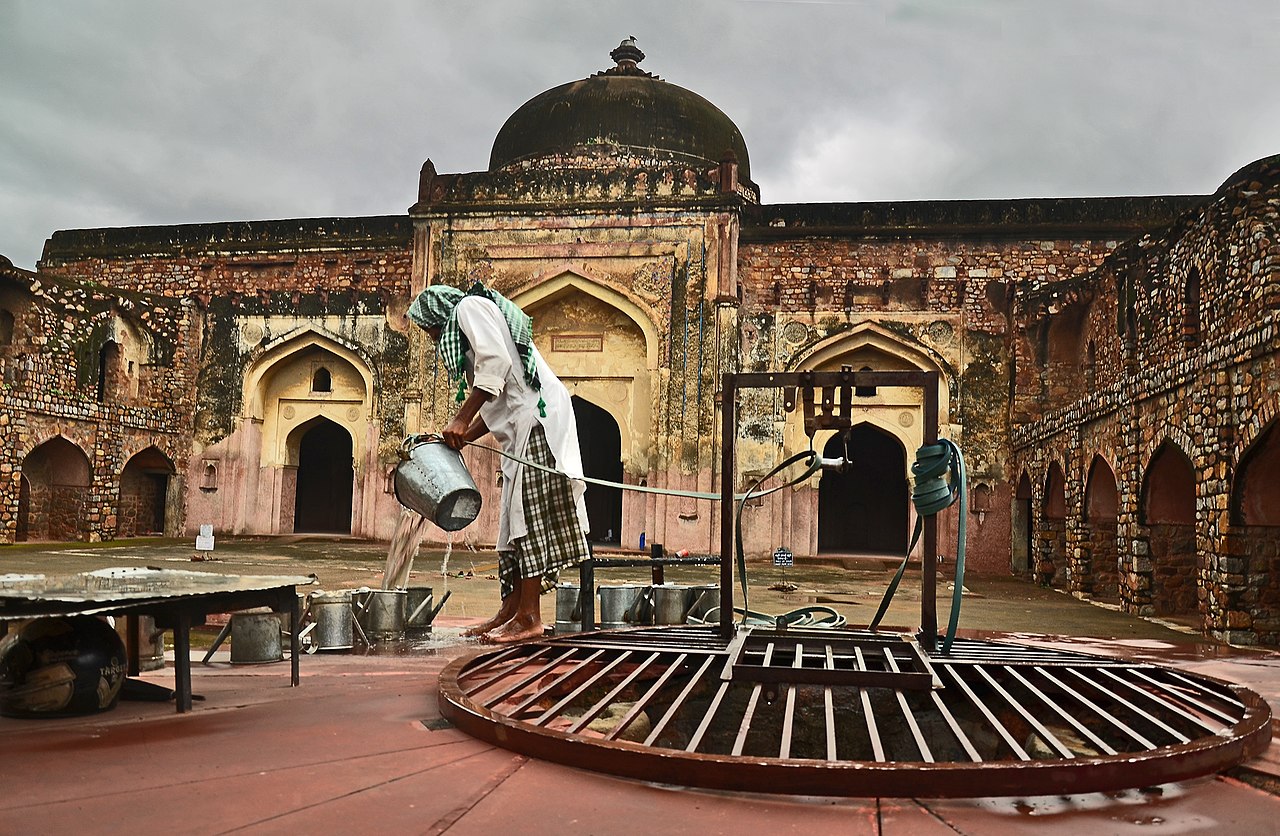
_-_Kakanagar-_New_Delhi_-N-DL-5_.jpg)
Khairul Manzil Masjid is a historical mosque located opposite the Purana Qila (Old Fort) in New Delhi, India. This mosque is significant due to its architectural heritage and historical background, reflecting Indo-Islamic architecture from the Mughal era. Establishment Built By: The mosque was built in 1561 by Maham Anga, who was the wet nurse and a significant political advisor to the Mughal Emperor Akbar. She held substantial influence over the young emperor and was an important figure in the Mughal court. Period: The mosque was constructed during the early Mughal period, specifically in the reign of Akbar (1556–1605). Architecture and Features Design: Khairul Manzil Masjid showcases a blend of Indo-Islamic architecture, typical of Mughal structures. Its style reflects Persian influences, with large arched entrances and intricate ornamental designs. Material: The mosque was built primarily using red sandstone and marble, materials that give it a distinctive appearance akin to many other Mughal structures of that era. Structure: It has a prayer hall with five arched openings and a spacious courtyard, which was common in mosques of the period. The gateway and prayer hall both feature Islamic calligraphy and floral designs. Fortified Nature: Unusually, the mosque also has defensive features, possibly because it was situated close to significant administrative centers, including the Mughal court and the Old Fort. Historical Significance Royal Association: Maham Anga was one of the most influential figures during Akbar's early reign, and her construction of the mosque emphasizes her religious devotion and political clout. Role in Mughal Politics: The mosque and its surroundings were sometimes used for courtly gatherings, making it not only a place of worship but also a symbol of the political influence held by prominent women in the Mughal empire. Today, Khairul Manzil Masjid is recognized as an important heritage site under the Archaeological Survey of India (ASI). Despite signs of aging, it stands as a testament to Mughal-era architecture and history, preserving the legacy of a remarkable female figure in Mughal India.